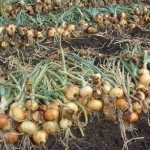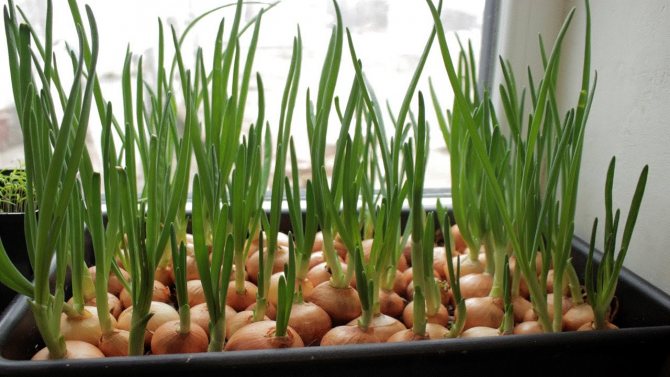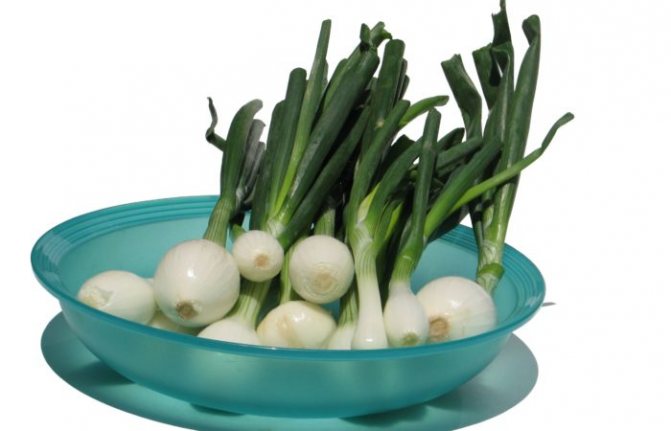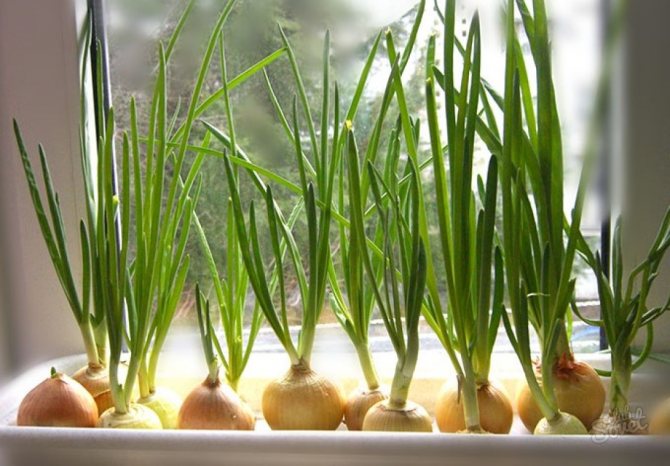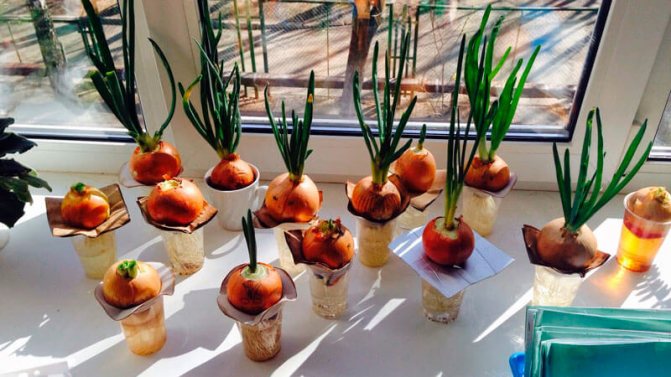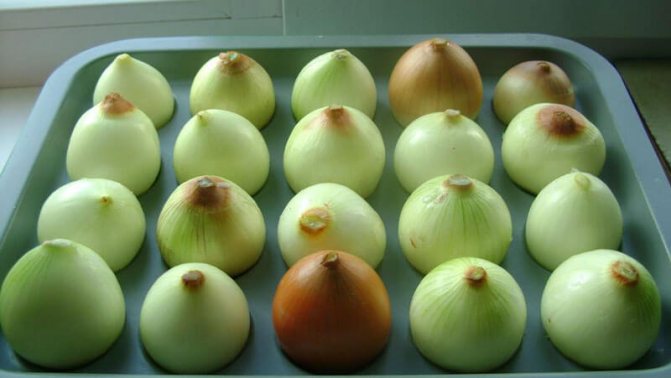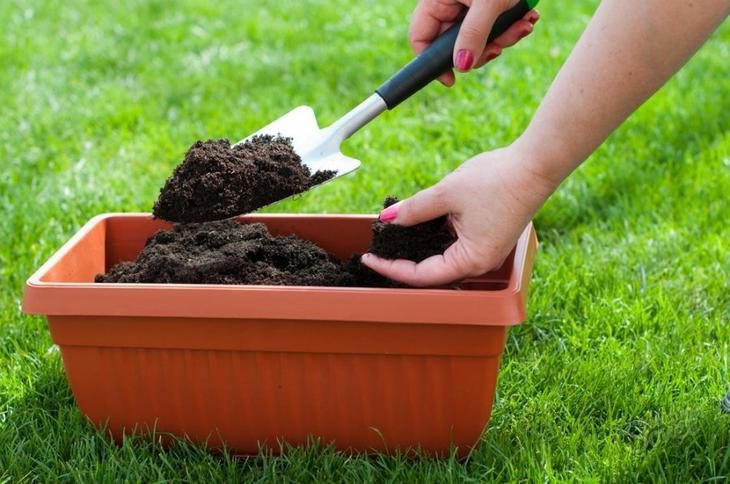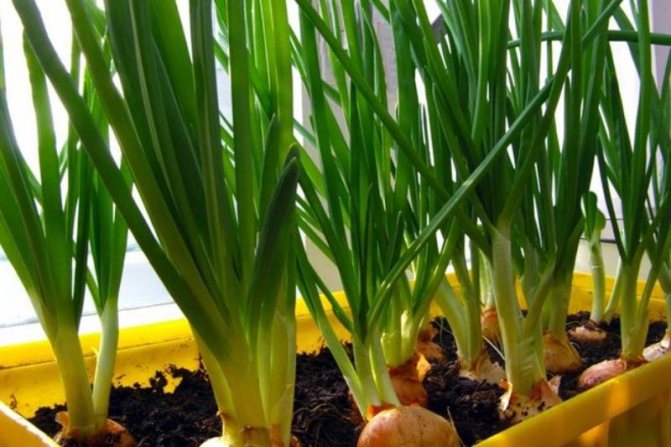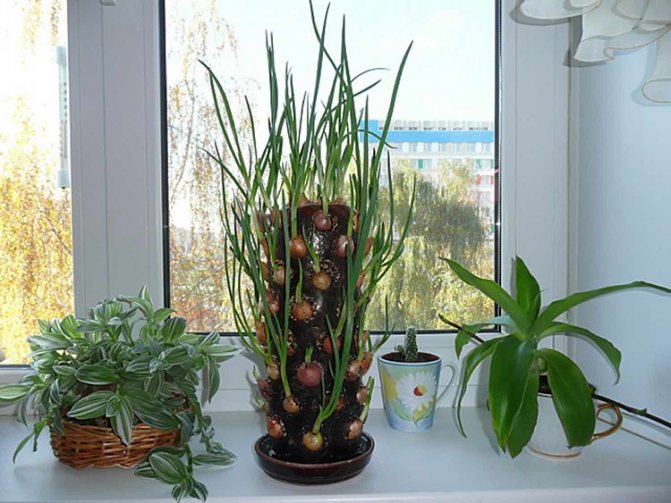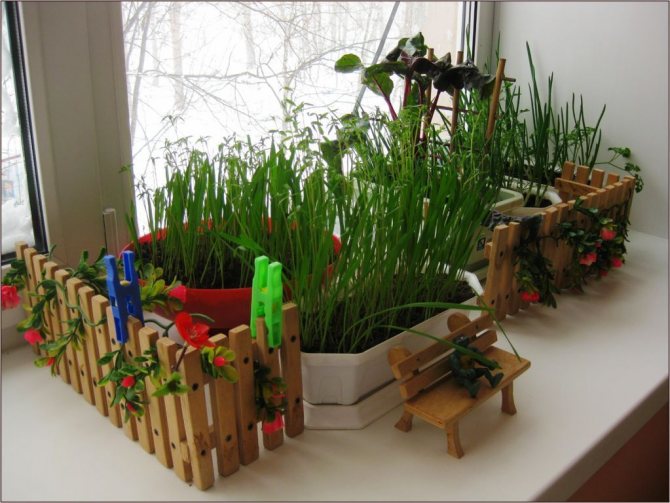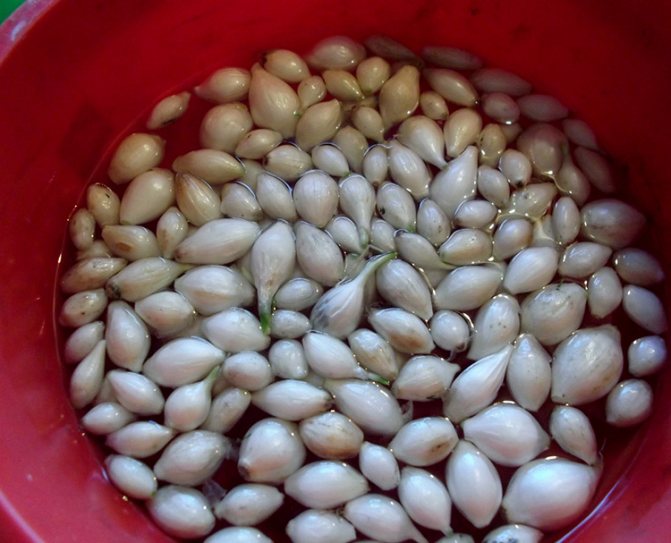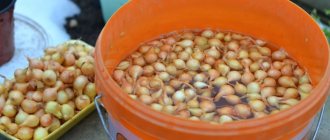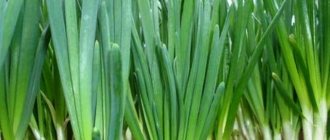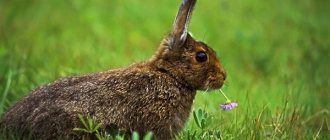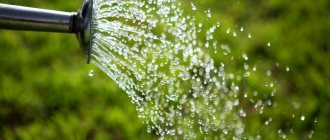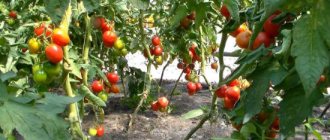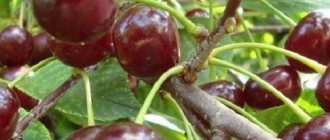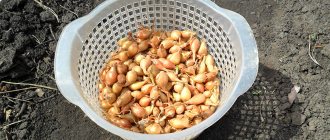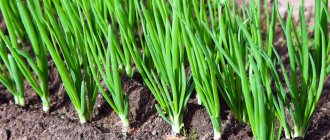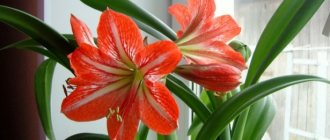Onions are not a very picky culture. But to get an excellent harvest, it will require some attention and the creation of certain conditions. How to grow onions at home in the garden? Find out from this article. The first thing to do is choose a landing site. Onions love open, sunny places. Do not plant it where groundwater is close.
How to grow onions at home. Top dressing
To grow onions at home, you will need to make 3 dressings;
- top dressing No. 1 is done in the phase of 2 leaves. You can feed it with slurry (1 liter of manure is bred in a bucket of water) or chicken (1 glass per bucket of water). Add a glass of ash and 40 g of superphosphate dissolved in water to the slurry or droppings.
- after 2 weeks comes the turn of feeding No. 2. For it (per bucket of water), superphosphate (25 g), urea (10 g), potassium (5 g) are required.
- feeding No. 3 is carried out at the end of June. It is similar to top dressing No. 2.
Do not overfeed onions with nitrogen fertilizers. Otherwise, the feather will be good, but at the expense of the heads. You do not need to feed the onion with either potassium chloride or fresh manure (it is applied only in the fall).
Do not forget about phosphate fertilizer (the size of the bulbs depends on it).
Growing onions in water - the original way
There is another way to grow onions on your windowsill or balcony - to use not soil, but water for planting. True, this method is quite laborious and requires certain skills. To grow plants in this way, take large and already sprouted root crops (from 4 cm or more) and several deep containers. In order for the roots to grow and not rot, they must be placed in the selected container so that only the lower part of the bulb with regrown roots is in the water.
To keep the root vegetable in this position, use cardboard with a cut out hole - cover the glass with the structure and place the onion in the hole. Thanks to this, the root crop will confidently hold in the required position. The bulb is kept in a glass of water for 3 to 5 days, after which the container is moved to the windowsill.
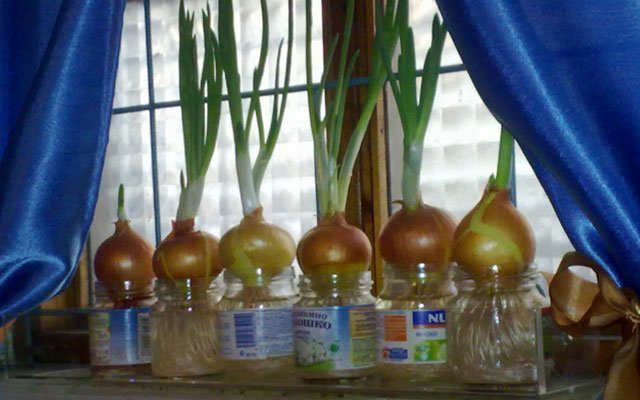
Before the roots form, the water in the glass or plate must be changed twice a day, when the feathers begin to grow - once a day. In this case, it is necessary to rinse the roots and dishes themselves under a stream of clean water. By the way, it is advisable to take water for growing bulbs either bottled or settled for a day.
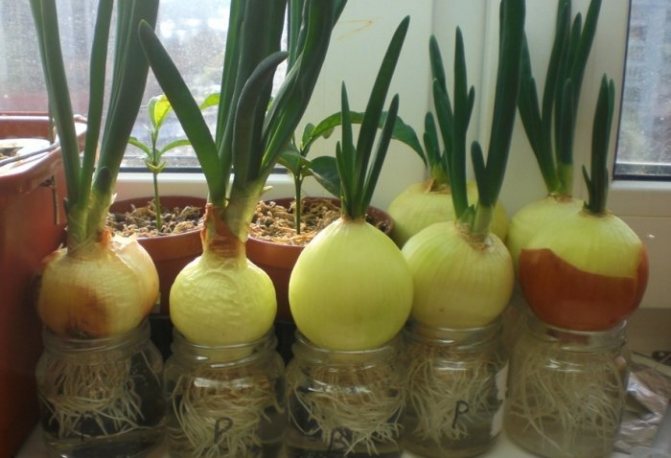

The temperature in the room where the containers with onions will be located should not exceed 22 ° C - otherwise, the onion arrows will be thin and faded. A similar temperature should be at home when growing radishes. Feathers that have grown above 20 cm are cut off, the bulbs themselves are thrown away - they are not suitable for replanting. By the way, it is undesirable to fertilize onions - for normal growth it will have enough sunlight and water. Well, now you know how to plant onions at home and how to grow them so that you can enjoy healthy foods all winter in a row. We hope our tips will help you with this.
Timing: when to plant?
Since the temperature in a city apartment is approximately the same all year round, there are no clear dates for planting onions.
It is advisable to place containers with vegetables on the south window so that the plants have enough light in winter.
If the onion is planned to be grown in the cold season, possible difficulties are foreseen in advance. For example, if the feathers begin to wither and turn yellow, the plants lack light. To eliminate the problem, a lamp is installed above the container. Watering the culture should be moderate, avoiding stagnant moisture. Otherwise, root rot will attack the bulbs.
Comments (5)
Rita
09/22/2017 at 06:43 |
In our family, green onions were on the table all year round. For mothers she came up with an effective way of growing herself, stuck the head of an onion into any pot with a flower. The harvest was delicious, lush, bright, full of flavor and aroma.Reply
Inna
09/26/2017 at 13:54 |
We grow turnip onions on our site. In the spring, when it begins to grow in a dry state, we plant it in improvised containers in the ground or just in jars of water and quickly get a green crop.
Reply
Anna
22.11.2017 at 02:35 |
Sometimes in winter I put already sprouted onions in a jar and it gives green feathers for a long time. They taste no different from ordinary purchased onions, only fresh and full of vitamins and minerals, which are sorely lacking in winter.
Reply
Lida
01.02.2018 at 18:24 |
The bow at my dacha does not go in any way. Apparently I don't like the soil. Although I have always thought that onions are a rather unpretentious plant. Maybe try hydroponics. I want to try sowing leeks again this year! ))
Reply
Sveridova
12.06.2018 at 12:52 |
So that in winter there was a fresh onion, we put it in a glass in water, but we get early spring greens by planting an onion "on a feather" before winter. After the first warm rays, she appears with us! And you?
Reply
Room microclimate
Homemade onions that are ready to eat
A mistake many gardeners make is placing onions in a well-lit and warm place immediately after planting. For the formation and adaptation of the root system in the substrate, the planted onions must be placed in a shaded and cool room for 10 days. The container can then be placed in a well-lit and warm place.
For this, windows with a south or southwest direction are well suited. With a short daylight hours, you will definitely need additional lighting. For this, you can use fluorescent lamps or LED panels. Install artificial lighting no closer than 20 cm to the plant.
Temperature is of great importance for onions during the forcing stage. At low temperatures, the onion slows down growth, with a strong increase, it withers and loses its quality. Therefore, it is always necessary to maintain the temperature regime of the plant + 18 ° С- + 25 ° С. When the temperature drops below + 12 ° C, onion development stops.
For onions, spraying is useful, which is carried out 2 times a week. In this case, you need to ensure that water does not fall on the bulb.
For onions, overheating of the substrate, which often happens under the influence of sunlight, is harmful. In these cases, the container of the plant is wrapped in foil.
Growing problems
Green onions are not particularly problematic. Difficulties are usually associated with improper watering and lighting schedules. If feathers do not sprout, although roots have appeared, the container may need to be placed on a sheet of styrofoam to protect it from the cold. You can also turn on a lamp to illuminate the plant.
If the feathers begin to turn yellow, wither, and the bulb itself wrinkles, you should check the substrate. It may be too wet and the vegetables are starting to rot. In this case, the unsuccessful batch of onions is simply thrown away and a new one is planted.
Terms of germination and harvesting
When properly planted and cared for, green onions will begin to sprout within 10-14 days. But it is not recommended to cut off young feathers immediately. It is better to wait 2-3 weeks for the shoots to reach 25 cm in length.There is only one way to constantly get a fresh crop: by constantly planting new bulbs.
The size of the planting material also plays an important role. Small bulbs are thrown away after the first cut of greenery, and large ones are capable of growing feathers 3-4 times.
Growing green onions on a windowsill is a simple and fun activity that will help provide your family with fresh greens all year round.
How to care?
Green onions grown on a windowsill do not need special care. Watering is carried out every few days. They are guided by the state of the top layer of the soil: it should not dry out.
If the greens are grown in water, make sure that the roots reach the liquid.
For irrigation, use settled or boiled water at room temperature. The culture does not need fertilizers, but if the formation of feathers has stopped, you can feed the plants with wood ash. In a liter of water for irrigation, 5 grams of the product are diluted and poured under the root.
Growing in the ground
The advantage of growing in soil is that the feathers are strong and juicy, rather than loose, as is often the case when planting onions in water. The culture is absolutely not demanding on the composition of the soil, but it is better to choose a loose substrate with an acidity of no more than 6-7 pH. For better breathability, drainage can be added to it - for example, vermiculite.
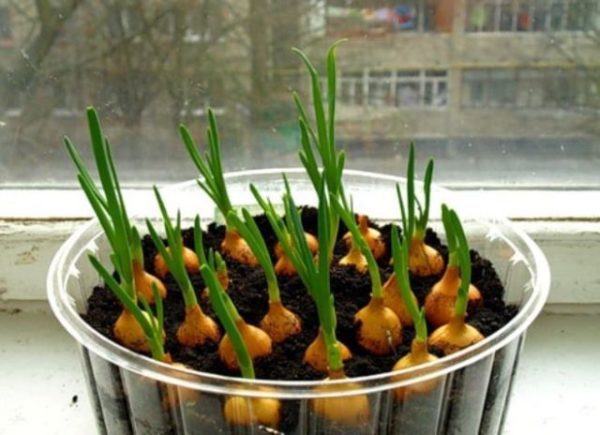

For planting, you will need light, loose soil and any deep container
The containers should be at least 7 cm deep and have holes for excess moisture to drain out so that the bulbs do not rot. The bulbs can be soaked before planting. growth promoter or disinfectant solution (potassium permanganate, aloe juice).
Table 2. Instructions for growing green onions in the ground.
| Sequencing | Description |
| Step 1 | Disinfect the substrate with a solution of potassium permanganate to destroy pathogenic microorganisms and fungal spores. Fill containers with soil with a layer of 3-4 cm high |
| Step 2 | Fill the earth with settled water so that its surface is 1 cm higher than the soil surface |
| Step 3 | Spread the prepared bulbs on the surface at 2 cm intervals so that they remain upright. It is not necessary to bury them too much in the ground. |
| Step 4 | Place the containers for 7 days in a cool place where the temperature does not rise above 25 ° C. After feathers 1-2 cm long appear on the tips, transfer them to another place |
You need to water the plantings for about a day - so that the soil does not dry out, but the bulbs are completely flooded (moisture should be just below the soil surface). The emerging greens can be sprinkled with water from time to time, but so that the bulbs remain dry. For normal development, the onion needs a lot of light, so in the cold season it needs to be supplemented with the help of special or ordinary lamps. In summer, containers are recommended to be taken outside or left near an open window.
Cutting off the first feathers is not recommended, as this will slow down the formation and development of new ones. You need to harvest about three weeks after planting, and the outermost feathers are first removed, as they begin to grow from the middle. To constantly consume fresh herbs, you need to plant the bulbs with an interval of 10-12 days.
Attention! A bulb that has already yielded a crop, but has not rotted and has no defects, can be reused - cut across in two halves and planted again.
Optimal conditions and rules of care
The vegetable does not like heat. After planting onions on greens at home, keep the temperature within + 15 ... + 20 ° С... When placed on a windowsill, it is necessary that it does not overheat from the sun's rays and the heat of heating appliances. Immediately after planting, you can raise the temperature to + 25 ° C... This contributes to the rapid emergence of sprouts. When + 30 ° C leaves stop growing.
Frequent watering is unacceptable, as this will contribute to rotting of the bulbs and the death of the vegetable.It is enough to carry out watering work 1-2 times every 7 days... The surface of the ground should not be dry. Lack of moisture will cause the turnip to dry out and stop releasing feathers.
The water should be at room temperature. You should first defend it. Too hot water will cause the appearance of harmful insects and the development of diseases. Low temperature water will slow down the development of the plant. Before harvesting, you should reduce the number of watering, gradually completely stopping the soil moisture. In the summer, on especially hot days, watering can be done every day. In winter, it is not recommended to water the plant with tap water. It must be boiled and then cooled.
Indoor humidity settings do not greatly affect the growth and development of onions. But to get more juicy leaves, they can be periodically sprayed with a spray bottle.
When grown in soil, to saturate the roots with oxygen, it is necessary to loosen the soil the next day after watering.
When growing onions on a feather on a windowsill in a region with short daylight hours, it is necessary to supply the plant with additional light. To do this, you can use fluorescent lamps or special lamps for growing plants. Luke needs 12-14 hours of light access per day.
Fertilize the soil carefully, as a large amount of organic matter can adversely affect the taste of green feathers. Before planting and after each cut, you can feed the soil with urea or nitroammophos. Wood ash is also used if the feather develops poorly. When carrying out work, it is necessary to ensure that the preparations do not fall on the green mass. Otherwise, it can be burned and damaged.
How we grew green onions on the table
Features: how to plant the bulbs?
To harvest a rich crop, it is necessary not only to choose a suitable growing method, but also to prepare the soil and planting material.
Soil requirements
Despite the unpretentiousness of the onion, it is better not to germinate it in heavy soils. In such conditions, moisture stagnation is observed, and the bulbs begin to rot. It is best to use a loose substrate that allows water to pass through well.
A suitable peat-humus mixture is bought in gardening stores or prepared independently. For this, sand, compost and peat are mixed in equal proportions. Mixing of forest land with plant compost is also allowed.
Bulb processing
Bulbs also need pre-planting processing, because only healthy specimens are able to give a rich harvest.
- Bulbs to be germinated must not be rotten, damaged or show signs of disease.
- Selected specimens are soaked in water for a day, and before planting, they are immersed in a light pink solution of potassium permanganate for 20 minutes.
- Immediately before planting, the top layer of the husk is removed and the tops are carefully trimmed.
If the bulb has already taken root, they are removed, and only after that the planting material is placed in the ground or water.
Growing exotic onions for greens
In hydroponics, in addition to onions, you can grow shallots and leeks. Perennial varieties can be planted in the ground, which will delight with fresh greens all year round:
- speed;
- batun;
- slime;
- jusai (having a garlic smell);
- multi-tiered;
- shnitt.
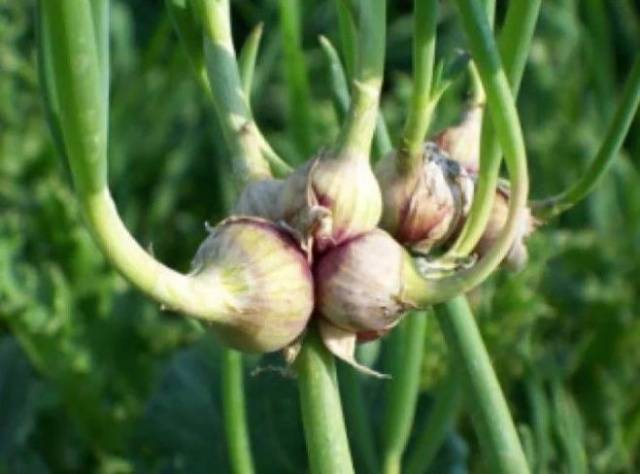

True, the batun onion in the middle of summer must be taken out of the ground, given a rest for 2 months, and then planted again in a container.

